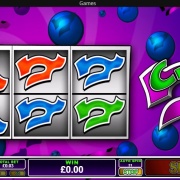Figure 13-9
The backyard of a corner site should be treated as an urban garden with a series of well-defined outdoor rooms. Plants, walls, and/or fences that are about 3 to 4 feet high can provide a low partition while sitting, but still allow homeowners to view other areas of the front yard and the street. It is important for the designer to treat the two sides as one so the house and property appear as one site, not two competing or unrelated areas. Urbanize Backyard Because it is usually small in size, it is recommended that the backyard of the corner lot be treated like a small urban space rather than a typical suburban backyard (Figure 13—9). If treated appropriately, the backyard of a corner lot can be viewed as an architectural extension of the house with a room or series of rooms that visually and functionally carry the indoors into the exterior (also see “The Townhouse Garden,” the last section of this chapter). Screening along the property lines is most critical in the backyard because of the close proximity of the house to the property line and the lack of outdoor area. It, too, should be clearly visible and lead directly to the front entry area. Small sitting or eating areas may be located adjacent to the public side of the house if proper separation and screening from the street is established. Walls, fences, and overhead trellises may be used with plants to create space and separation from neighbors. Figure 13-7
Walls and hedges can be used to separate yard areas from the adjoining streets. The two walks should meet at one common outdoor entry foyer, giving everyone the same experience of entering the house (Figure 13—6). This should be done even if there is a clear “front” and “side” to the orientation of the house toward the streets. A second walk is frequently necessary from the driveway. altogether with a series of paved outdoor sitting, entertaining, and/or eating spaces established in its place. Thus, lawn should be minimized or eliminated
Figure 13-8
Overhead planes and fences/walls should be used in the backyard to establish privacy from nearby neighbors. Again, separation from the street might be provided with plants or structures if local zoning codes permit. Screening should be provided both from the adjoining streets and from neighboring properties. Attractive pavement should dominate the ground plane and be balanced by carefully located planting beds. Figure 13-5
The front door should be emphasized to attract the eye and visitor. Unify Street Frontage The site design for a corner lot should unify the two street frontages through a common set of design forms and palette of materials (Figures 13—5 and 13—7). One area, usually the front of the house and its associated entry, should be emphasized to visually lead the eye and visitors to the front door (Figure 13—5). These should be carefully detailed to provide spatial enclosure in both the vertical and overhead planes. One walk should extend directly from one of the streets to the front door and be emphasized with showy planting, accent lighting, address sign, and so on to acknowledge its prominence (Figure 13—5). This concept will likewise avoid the possibility of a monotonous appearance along the street frontage. To separate the site from the streets, walls, fences, or hedges may be placed along the street or sidewalk edge in selected locations if local zoning permits this (Figure 13—7). In addition, it may be necessary to provide overhead planes to screen views from the upper stories of nearby houses (Figure 13—8). A unified composition for the areas facing both streets will provide a consistent public identity to the site and house from all vantage points. Two different walks are often required on a corner site. This locality gives homeowners a direct connection to the activity of the street without jeopardizing privacy.


